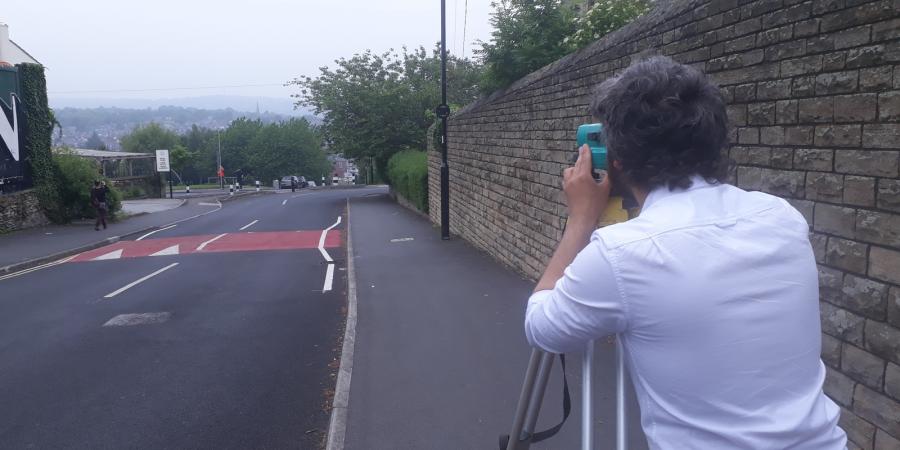...or the heat!
As a field technician being in the office for a week is exciting, as you never know what you will be doing. One minute you will be doing odd jobs, the next you will be receiving training. Last week was the most action-packed week in the office ever!
I started the week helping our environmental archaeologists by emptying buckets into the silt tanks and then cleaning them for reuse. This job isn’t glamorous, but is crucial to the environmental process and frees up sample buckets for upcoming projects.
The rest of the week featured a variety of refresher training courses that are often difficult to arrange during big projects. For me this was very useful and is something I will benefit from in my next job in commercial archaeology.
Photography
I was shown how to use old-fashioned 35 mm cameras, this was really handy, as on some sites it is a requirement to use black and white film. By gaining familiarity with such cameras I will be able to use them without wasting shots, as there is nothing worse than developing a film to find all the shots are under or overexposed.
Drawings
It was really good to hear from Ian Atkins, our illustrator, about the standards he requires site drawings to meet. In the end these need to be understood by someone who has never seen the site (ie, Ian!), so it’s important to take a step back and check everything makes sense and has been properly completed.
Context sheets
This was a really good refresher in avoiding common mistakes. Distinguishing primary, secondary and tertiary fills can be difficult, so it was helpful to be shown examples of each and be told how they form.
Metal detecting
Learning how to do this was interesting, as the machine is far more complex than I first thought. It can be set up to ignore certain metals (like iron), and can tell you what sort of metal it has detected. You just have to remember not to put your ‘steelies’ too close to the detector!
Artefacts and environmental remains
Here I was shown how to date medieval coins, clay pipes, pot and glass bottles, which can really help interpret the feature that the find has come from.
I was then given a behind-the-scenes look at processing environmental samples, making me more aware of why samples are taken on site and what the best features to sample are.
One simple thing that kept coming up in the sessions was handwriting: it is very important to write neatly on bags, sheets and labels to avoid any post-ex headaches!
GPS
Using the GPS survey equipment is something that field technicians working on big projects often don’t get taught, but familiarity with the kit is important for working on smaller sites or watching briefs. I was shown how to set up the GPS, how to create jobs and store points, and learned how important it is to use the correct codes for the type of thing I was surveying. It was also handy to learn how reconnect the GPS if it loses satellite or phone signal.
Dumpy level
This took us all back to our university days, as in reality, not many of us have used one since! Wessex Archaeology mostly use dumpy levels where it is not possible to get a GPS signal, such as urban sites surrounded by tall buildings.
Getting my head round the maths again was certainly a challenge but working out the height of collimation and reduced level got easier, eventually.


I keep a site notebook that I update daily with drawings, notes and artistic impressions of the work I have been doing. Being in the office gave me the opportunity to practise drawing finds, so each night I drew three bits of pottery. Site books are a great way for me to develop an understanding of the site I am working on – it makes me think about what I am doing and brings a narrative to my work.
